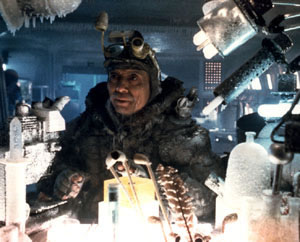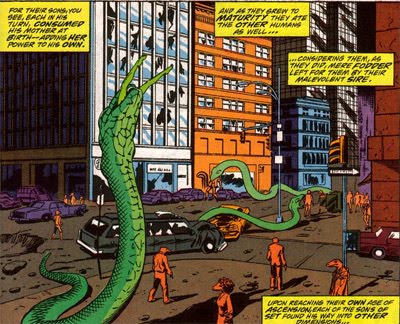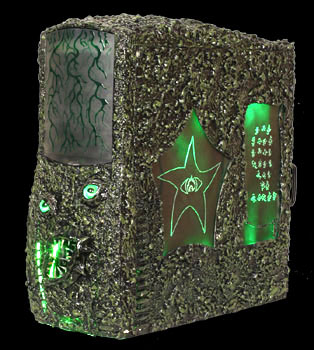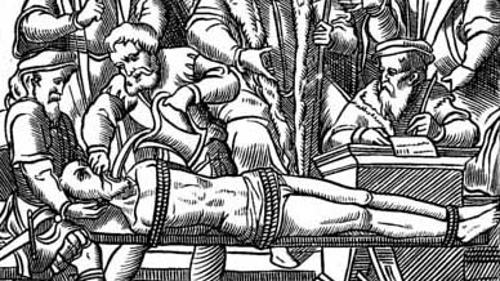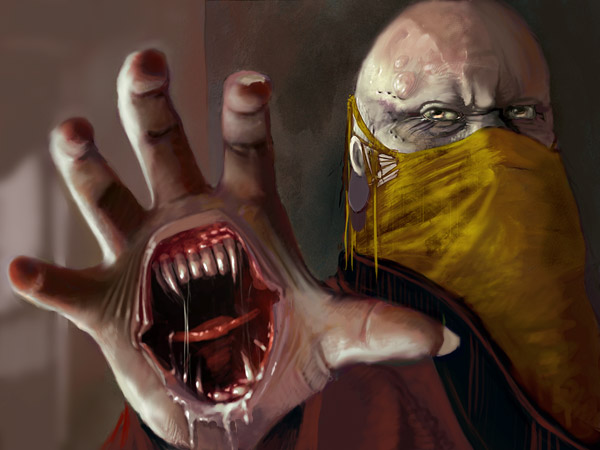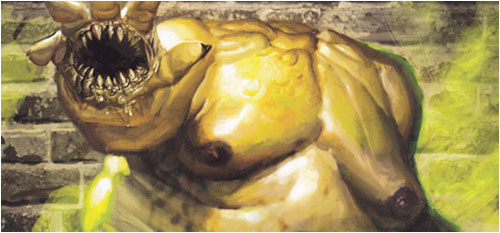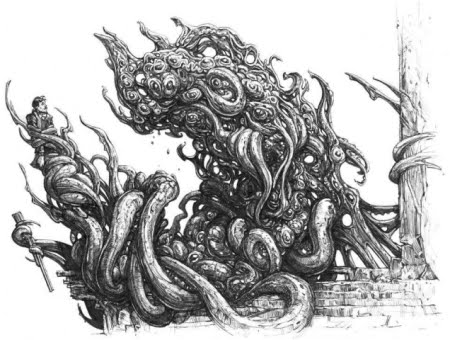A surreal series of zine rants
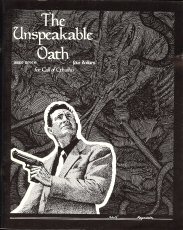
That maybe doesn't look very cyberpunk or particularly mythosy and honestly, it isn't. But that's the real cover for one of these things.
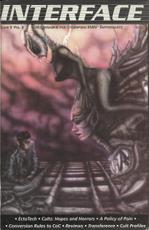
I don't know what that is supposed to be, but it's more obviously inspired by Cyberpunk and Mythos. Anyway, it's the other cover.
Frank and I have covered Call of Cthulhu, GURPS: Cyberpunk, and GURPS: Cthulhupunk, so now we're doing...sort of the same thing from a different angle.
Back in the early 90s, people could self-produce and sell zines related to their favorite RPGS; R. Talsorian's Cyberpunk 2020 had Interface, Call of Cthulhu had The Unspeakable Oath. In '92 they had a "crossover" where both 'zines had material related to "Cthulhupunk." So we're going to be looking at that: Interface Magazine vol. 2, no. 2 and The Unspeakable Oath #7.
I feel I have to go back a bit because we're reviewing articles in Zines from 1992, and in the twenty first century people don't know what Zines are. This makes me feel very old. Basically kids: Zines are like MySpace pages in print form. Fuck. That reference is itself dated beyond recognition and that was from a decade later. Damn I'm old. Anyway, you know how some YouTube channels are filled with incomprehensible rant vlogs and little clips of whatever the host happens to obsess over? Well imagine that, but in printed form and then photocopied and distributed via the US Mail or sold over the counter at head shops.
Head shops were like if Hot Topic sold weed out of the back and didn't have a regional manager whose job it was to stop it. Don't @ me.
So an example Zine I used to own was Animal Review #8: The Unreliable Edition. In addition to some True Facts about animals and some reviews of then current music, it had a deep dive into the similarities and differences between Dostoyevsky's The Possessed and LeGuin's The Dispossessed. And some rants, funny anecdotes, and some crude hand drawn pictures. So basically exactly what you'd find on an eclectic personal YouTube channel, but back then in order to make something like that you hand to type up all the scripts, do paste-up with actual paste, and then photocopy all the pages to make the booklet. I found Animal Review #8 in San Francisco in the 90s, and I have never met anyone else who has ever held a copy of Animal Review #8. Heck, it's actually labeled “The Unreliable Edition” and I don't know that there were actually seven previous issues because I've not seen them all.
Some Zines attempted to gain some semblance of “legitimacy.” Often this was as simple as just being a fanzine of some star or product and calling the object of adoration and saying “I'm making a fanzine about your work, is that cool?” Sometimes there were even commercial licensing agreements. Being the “official” fanzine of one thing or another would sometimes get you a lot more readers depending on what the fandom was. And there's definitely a spectrum of professionality: Disney maintained heir own in house “fanzine” that had glossy pages, while at the other end of the spectrum you got guys doing the Beautiful Mind thing in their own garages. And somewhere along that spectrum you got Pagan Publishing and Promethean Press – two outfits that were able to get people to write for them and submit art because they could deliver somewhat higher production values. Yes, these outfits are still basically “four guys and a dog” but people who couldn't get a gig writing for TSR or R Talsorian (yet was the implied suffix to that thought) would submit to them to these game zines. Think of it like Onyx Path, but in 1992.
The Unspeakable Oath was a semi-official Call of Cthulhu fanzine that ran 14 issues between 1990 and 2001. The numbering is complicated by the fact that several issues were “double issues” that have multiple numbers on them and at least one issue has a different cover and print size in different printings. And the first few issues came out fast and furious – the Issue 7 we are reviewing came out in 1992, so if some time between 1993 and 2001 you had thought the Unspeakable Oath had stopped being published altogether, that would have been pretty reasonable since issues weren't coming out even every year before they officially admitted they weren't doing it anymore. Interface was a semi-official Cyberpunk 2020 fanzine that seems to have only run 6 issues, but they are divided into “volumes” like they were a scientific journal. So while this is “Issue 2” it's actually the second “Issue 2” and as far as I can tell it's also the last “Issue 2.”
Fair disclaimer: I actually published stuff in the later issues of The Unspeakable Oath.
TUO and Pagan Publishing in particular are sort of a heartbreaker's nexus; many of their products are fairly highly-regarded within the Call of Cthulhu gaming circles to this day, and the folks behind them are the ones that do stuff like Delta Green and Achtung! Cthulhu and World War Cthulhu.
This isn't quite the first "CyberCthulhu/Cthulhupunk" sort of crossover, in fiction or otherwise, and the seeds of this kind of crossover have been evident in fiction since the 80s, but the real impetus for an actual "event" like this was probably the publication of Cthulhu Now: Modern Adventures and Background for Call of Cthulhu Roleplaying by Chaosium in 1992, which introduced things like the Computer skill.
While the things Lovecraft actually wrote were collectively in the then-current genre of “Weird Fiction” which included everything from gothic horror to detective stories, he is most remembered for “The Mythos” which is essentially science fiction. So whenever some bright young lad comes up with the idea to “combine Mythos and Science Fiction” that's off to a bad start. Not that this doesn't happen all the time (see CthulhuTech and CthulhuPunk), but it's basically like someone offering to make your coffee into a hot caffeinated drink. This isn't chocolate and peanut butter being offered, they are combining orange and lemon marmalade.
The CyberCthulhu section in The Unspeakable Oath begins with an attempt to explain what Cyberpunk is. Not the game of Cyberpunk, but the actual literary subgenre. I don't think it particularly does a great job of explaining the situation, but we're talking about a fricking zine article,so I don't know what you're expecting. The CyberCthulhu section in Interface appears to have been written under the impression that the crossover was going to be called “The Dark Time” which is a better name. In any case, the Interface article begins with a tirade about how great a game Call of Cthulhu is, and introducing you to the core ideas of that RPG. This might be why this appears to be the last issue of Interface.
The Unspeakable Oath is basically a one-man show being done by John Tynes. He's the editor, publisher, and sole credited author on the entire CyberCthulhu thing. He's the same John Tynes who would go on to do Delta Green and Unknown Armies. The Interface doesn't break down who wrote what and just has six “staff writers.” Some of these guys went on to do other things, Thaddeus Howze is now a futurist essayist. Barton Bolmen appears to have fallen off the face of the Earth once the Interface closed shop. Peter Christian's work in Interface achieved some note and he appears to have continued writing for other gaming magazines in the 90s, but it's hard to tell because he has a really common name. Chris Hockabout went on to do some work on video games and also wrote some sourcebooks for Secrets of Zir'An which is an RPG you have never heard of because it had the poor timing to try to be a stand alone game system during the d20 boom. Aram Gutowski had a company called The Eighth Direction and was also in on the Secrets of Zir'An thing and now I think he makes craft beer. And finally, Kevin De'Antonio also appears to have fallen off the face of the Earth, but I wouldn't be at all surprised that he simply started spelling his name differently or something. In any case, all of these people lived in the San Francisco Bay Area in 1992, and most of them still do. The entire crossover idea was because they actually all met up in person and decided to do that.
We have at times called attention to the fact that, for example, the original Lion Rampant team shared a dorm room or that TSR used to recruit people directly from the local college gaming clubs in Wisconsin. Well the Bay Area gaming scene was similarly insular. I personally didn't get recruited to write for these people because I was in junior high at the time, but the fact is these guys had haunts and social circles not far removed from my own. It's almost a certainty that I've been in a game store with at least one of these authors at some point, and a pretty significant chance that we've been at the same house party. Like, if Thaddeus Howze never went to one of my uncle's massive Oakland Thanksgivings in the 90s, it was because of a scheduling conflict rather than a lack of social circle intersection.
John Tynes wrote:CyberPunk, for the uninitiated, is something of a sub-genre or style of science fiction. Writers who are frequently grouped behind the "CyberPunk author" label include William A. Gibson, Lewis Shiner, Walter John Williams, Bruce Sterling, and others. Superficially, Cyberpunk consists of two main features.

Johnny Mnemonic, based on the short story by William Gibson, wouldn't come out until 1995. Back in '92, cyberpunk was already a decade old literary trend that never really escaped the artistic shadow of Bladerunner (1982), and more people had heard of Lawnmower Man (1992) than Gunhed (1989).
So when Tynes is presenting a synopsis of Cyberpunk as he understands it, it's for an audience that would have been too young to read Neuromancer (1984) when it came out.
Did Unspeakable Oath go on longer than Interface because it had worse production values and was basically a one-man show? Quite possibly. Zines are a labor of love and obsession, and getting a group to stay together and keep doing it can be really hard. Egos get in the way and stuff. It's also possible that Interface fell apart because, well, Cyberpunk fell apart. Not the genre, but the actual RPG. In 1993, Cyberpunk 2020 went in a really weird direction with Cybergeneration, and a lot of Cyberpunk fans were very much not on board. Another edition of Cyberpunk didn't happen until 2005, and Cyberpunk 203X was so fucking weird that most fans of the game and genre were just dumbfounded by the whole thing.
By contrast, Call of Cthulhu has never done anything in particular that caused enough controversy in the community to get it to fragment. Call of Cthulhu is still very recognizably a game from the early eighties that wears its 1970s framework without shame. People get disillusioned with Call of Cthulhu of course – it's a pretty shit game engine to be honest – but people leave Call of Cthulhu, Call of Cthulhu has never left its fans.

Call of Cthulhu never had the fanbase fracture, but it spins off games of its own all the time - usually heartbreakers, sometimes bizarre conglomerations like GURPS: CthulhuPunk. The evolving cultural context and technological possibilities of contemporary life continue to influence stories, as is very evident in Charles Stross' The Laundry series where all magic is basically computation equivalent to figuring out what the voltage is at each node in an electrical network, and major spells can be coded as apps on a smartphone. But The Atrocity Archives (2004) is twelve years in the future of this particular team-up. The internet is still a wild world wide web.
CyberCthulhu is 21 pages of Unspeakable Oath #7, and 58 pages of Interface Volume 2 #2. Almost the entirety of CyberCthulhu in the Unspeakable Oath is a scenario called Convergence by John Tyne. Interface comparatively has a lot more essays, scenarios, and vignettes, and a lot of them are made by Peter Christian or Chris Hockabout. I don't know what the other staff authors contributed, but not all the pages are attributed.
In any case, we'll be tackling the Unspeakable Oath part first, because we can definitely get through the whole zine in one post.
Moderate your expectations. Folks hoping for Shadowrun with more tentacles are going to be disappointed; you don't get to roll up a Deep One hybrid hacker and you're not going to get a shoggothware graft on the stump of your arm. But it does get...interesting. So, strap in and prepare for a historical deep dive into a "what might have been." If anything, this is a bit similar to The Future World of Darkness, where somebody is trying to cram two flavors of ice cream together to see how they taste.














